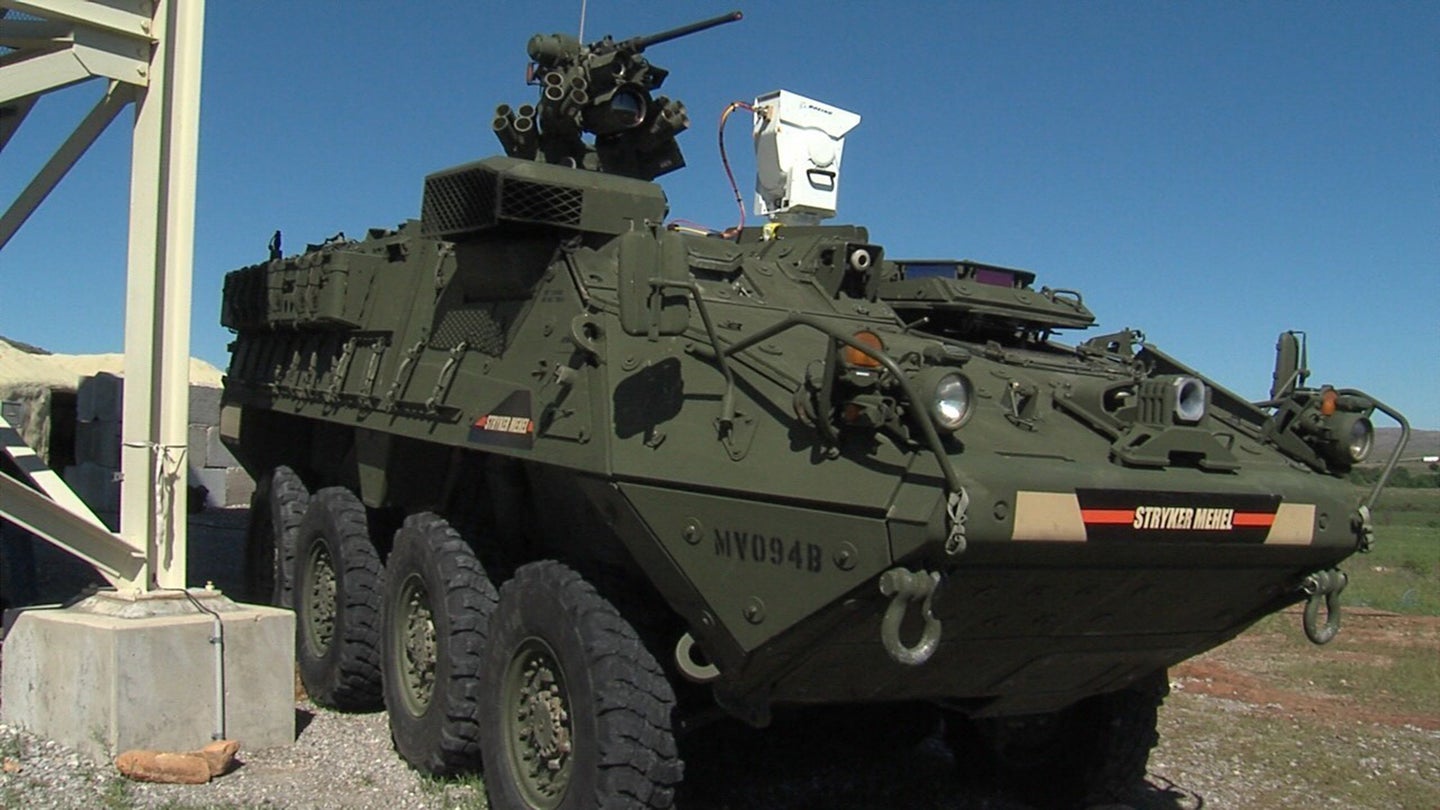
On July 28, defense giant Lockheed Martin announced it was planning to scale its current laser technology up to a 500-kilowatt-class laser. This would be a substantial increase in output over the company’s existing 300-kW laser, and would be more powerful than existing laser weapons in development or in the field today. The move also illustrates one of the fundamental truths about modern laser weapons: when it comes to destruction by laser, more power equals faster results.
Laser weapons represent a substantial up-front cost during their development and research, with the promise that they will pay off down the road in lower costs per shot fired and object destroyed. Lasers are primarily defensive tools: High-powered light is used to melt through and disable income drones, mortar rounds, rockets, and other projectiles. Many of these targets are small, like hobbyist quadcopters or simple rockets, and can be defused as a threat by disabling a rotor limb or a guide fin.
But when it comes to protecting big targets, like Navy ships, Army bases, or Air Force hangars, destroying threats quickly and effectively becomes an essential task of base defense.
A laser with 500 kilowatts of energy would be powerful. In October 2022, when Popular Science got to go hands-on with a Raytheon laser weapon, it was a 10-kilowatt laser. Held steady against a drone by a professional, it could disable a quadcopter in as little as eight seconds. Used by PopSci, it took 15 seconds to stop the same style of drone.
What the 500-kilowatt laser in development promises is 50 times the same energy concentrated into a beam, likely melting drones in fractions of a second. The US Army has already selected Lockheed’s 300-kw laser to mount on armored vehicles and protect formations from rocket attacks.
“Lockheed Martin has invested in our production infrastructure in anticipation of the Department of Defense’s demand for laser weapons that have additional layers of protection with deep magazines, low cost per engagement, high speed of light delivery and high precision response reducing logistics requirements,” said Rick Cordaro, vice president of Mission Systems & Weapons at Lockheed Martin, in a release. “The 500-kW laser will incorporate our successes from the 300-kW system and lessons learned from legacy programs to further prove the capability to defend against a range of threats.”
While jargon-dense, Cordaro’s statement parses out to a comprehensive overview of why, exactly, the Pentagon wants laser weapons. “Additional layers of protection” means that these lasers will not replace existing defenses, but join them, letting lasers slot into use alongside protective measures like Patriot missiles and anti-helicopter rockets. “Deep magazines” refers to the capacity of a laser to fire as long as it has electrical power. This can come from batteries, generators, or from onboard power plants when used on ships. It’s a reference to magazines of ammunition, typically bullets or shells, used by guns and cannons. While those magazines are limited by physical constraints, like how many bullets can be prepared to feed into a gun before firing, the quantity of a laser’s shots are limited by its access to electrical power.
Additionally, “low cost per engagement” is the military and industry’s long promise to reduce the cost of each zap fired by a laser down to about $1. “Engagement,” here, means destruction of incoming targets. A cost per engagement is how much ammunition was used to destroy a threat. Patriot missiles, built to shoot down jets, cost about $4.1 million apiece, which is a lot of money, but can be worth it against expensive jets, or to prevent cruise missiles hitting more valuable targets. If lasers like Lockheed’s can offer cheaper ways to stop some threats, it can let the military save more expensive tools for threats lasers cannot hit.
Finally, Cordaro emphasizes “high speed of light delivery and high precision response reducing logistics requirements.” If the laser can quickly and accurately stop threats, especially threats that are hard to hit at present or take lots of ammunition to stop, then a more powerful laser can meet those threats at the price of electricity generated.
Lockheed is developing the 500-kW laser as part of the High Energy Laser Scaling Initiative, a Pentagon program to develop lasers at the 300-, 500-, and 1000-kW power ranges. A Government Accountability Office report from April 2023 notes that “Such systems could eventually enable [high energy lasers] to engage powerful targets such as cruise missiles.”
For now, work at the 500-kW level is in development. Should it succeed, and should lasers be able to scale up even more, the promise is for weapons that, once in place, could offer unprecedented protection against major threats. For decades, missiles have presented an unbalanced threat to tanks, planes, and ships, where the missile is much cheaper than the vehicle it is designed to destroy. Lasers, while not cheap to develop, could make missiles less effective as a counter to such vehicles, because the directed energy would be able to zap them before they reached their targets.
The post Lockheed Martin plans to make its most powerful military laser yet appeared first on Popular Science.
Articles may contain affiliate links which enable us to share in the revenue of any purchases made.
from | Popular Science https://ift.tt/mcvnqAL



0 Comments